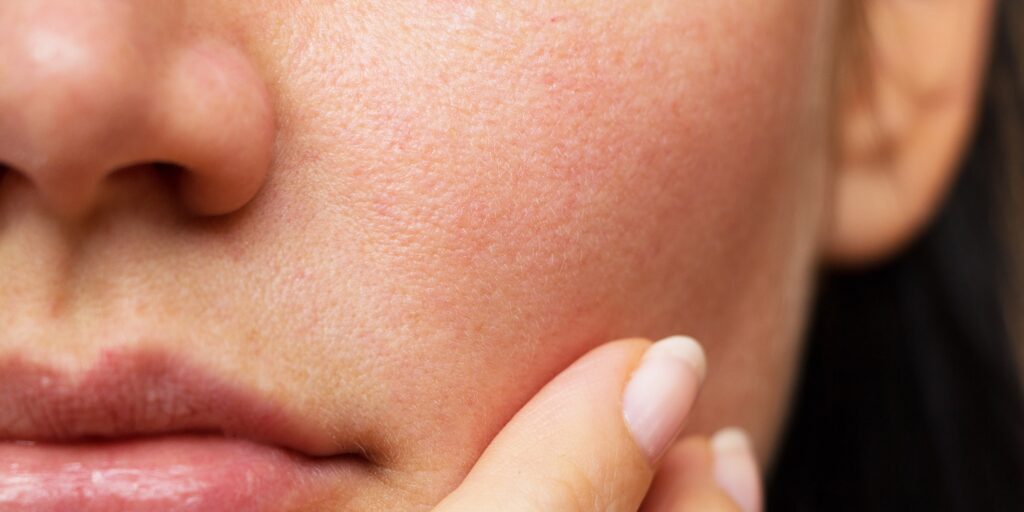A rough skin texture is quite typical for people with skin dryness. Even though rough skin is most common on the face, some people notice bumpy skin on hands, feet, arms, elbows, and neck. Fortunately, you no longer need to suffer from rough or dry facial skin, as the current beauty industry offers various treatments. Please contact our medical spa to make the first appointment for Morpheus8 skin treatment for a plumper face and a smoother skin texture. Let’s determine how to get rid of rough skin on face below.
Why does the skin on my face feel rough?
If your skin feels rough to the touch, it usually occurs due to the build-up of dead skin cells and skin dryness. It is worth mentioning that the natural skin renewing process can slow down as we age so that the uneven skin texture might be more prominent. At the same time, specific skin conditions can provoke the accumulation of dead skin cells. Psoriasis is a typical reason for rough skin with excess irritation accompanied by thick scales. Besides, bumpy red skin on the cheeks usually results from eczema. If you find a facial moisturizer impractical to improve rough, dry facial skin, it’s time to refer to more complex professional or at-home solutions.
How to deal with the rough, bumpy skin on face?
1. Avoid using harsh skincare products
If you want to cope with rough, dry facial skin, it would be best to limit the use of care products with parabens, fragrances, and colorants. These ingredients in a skincare ritual can make your skin more prone to irritation that is inadvisable for dry and sensitive skin owners. Therefore, before opting for cleansers, toners, moisturizers, and serums ensure they are hypoallergenic, fragrance-free, and dermatologically tested on dry skin.
2. Give up long hot baths
Hot water while showering or bathing can provoke a reduction of natural oils in the skin, making it drier and bumpier to the appearance. Therefore, trying quick warm showers instead of long hot baths is your best bet to eliminate skin dryness. Remember to apply moisturizer every time you have a shower or a bath. The less you expose facial skin to excess heat, the more hydrated it will remain naturally.
3. Try chemical peels
Professional chemical peel remains a versatile rough skin on face treatment. It is ideal for treating multiple skin concerns, like skin blemishes, rough skin, skin discoloration, acne, facial wrinkles, and skin scarring. So, how does this approach work? Chemical peels remove the upper skin layers to reveal the lower healthy skin that is blemish-free and smooth.
Peels with alpha-hydroxy acid and other mild acid components are considered efficient for healing fine facial lines, light blemishes, and bumpy skin texture, thanks to treating the upper skin layer specifically. If you notice rough skin on face suddenly, an in-office chemical peel is the way to go.

